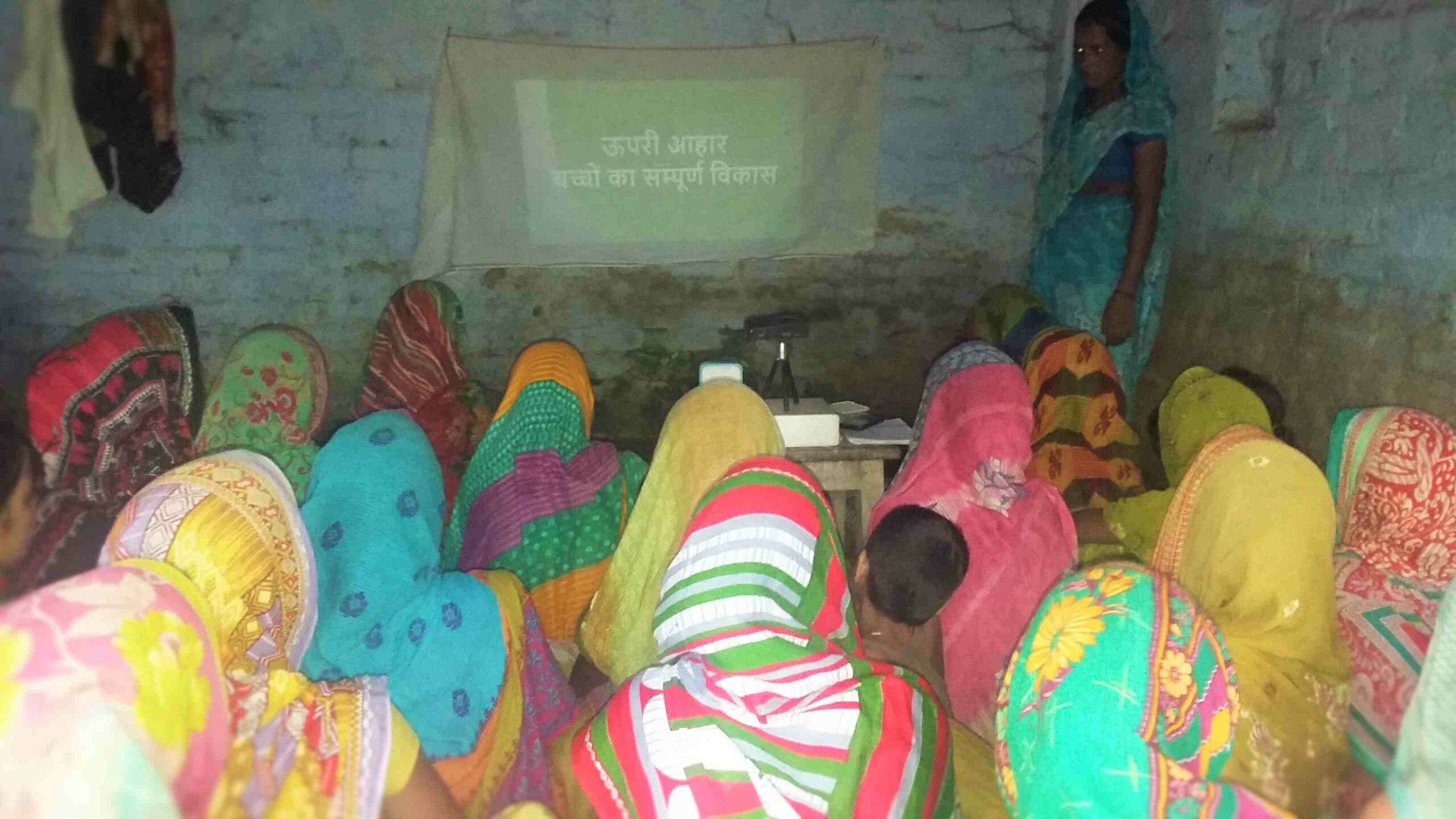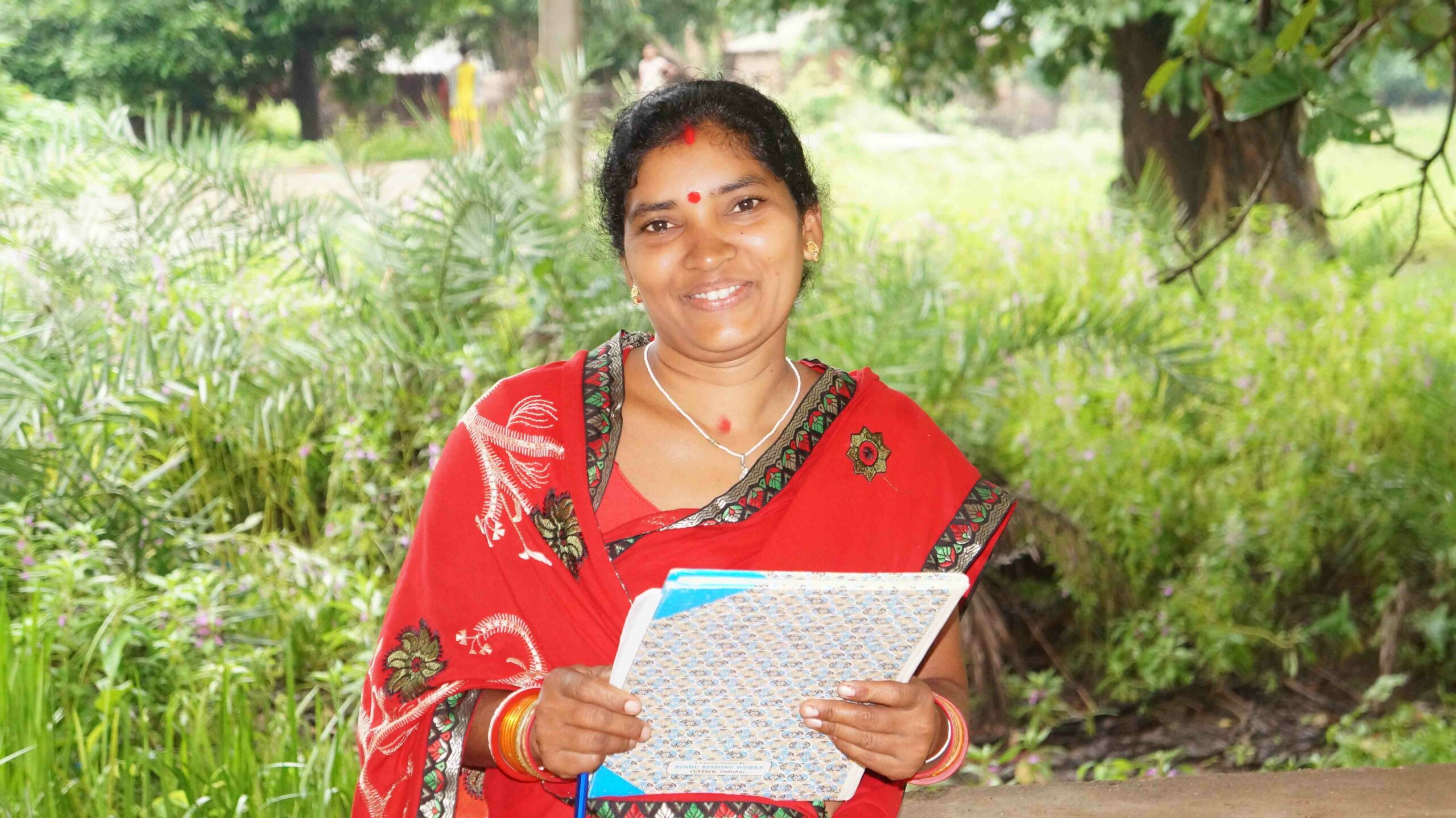“A teacher must be a good facilitator, competent, knowledgeable, entertaining, inspiring, dedicated, strict, punctual,” this is everything that Poonam Devi, 26, aspires to be and hopes she is, as a video resource person (VRP) with JEEViKA, in her village.
Poonam Devi, a farmer and a VRP in Indra Village Organization (VO) of Kavilashi village in Saurbazar block in Saharsa wants to ensure a brighter future for her two children. She and Kisto Yadav (her husband) work very hard to achieve that.
Being a VRP is a responsibility that Poonam Devi takes seriously. “I used to provide knowledge on current seasonal crops through flipcharts, some flexes, paper, and pen or else by drawing lines on the land. I would emphasize the main points and discuss them in the SHG meetings. I would discuss the seasonal processes of Systematic Rice/Wheat Intensification (SRI and SWI) or any other enhanced method of preparing pesticides, composts etc. However, members would fail to remember the agricultural practices shared in the meeting,” shares Poonam. “In addition to this, I used to visit the members’ house to teach them again, which was time-consuming,” she adds.
In October 2014, Poonam attended the JEEViKA-Digital Green Dissemination Training and was introduced to the concept of learning through videos. Now, a handheld Pico Projector with videos in it had replaced the flip charts and pen and paper. Poonam was quick to learn about how rechargeable equipment which is portable, has good Audio-Video configuration can be played among community members. She enjoyed her new role as a teacher of a farmers Smart Class. She has learned the importance of pause and play while disseminating videos. She finds this digital learning environment for farmers to be very suitable for communities with low literacy levels.

She describes the video disseminations as a Classroom that she is proud to contribute to in increasing awareness about enhanced agricultural practices among her peers. She takes every opportunity to share information about the agricultural Package of Practices (PoP) with members during the self-help group (SHG) meetings.
I never thought I could ever even work on a laptop despite being a university graduate due to my families financial problems. But I feel proud that I am an agricultural extension worker armed with the latest technology, says Poonam. Just by watching the 8-10 minute long videos on agricultural practices on different subjects like seed treatment, preparation of nursery bed for different vegetables/crop, maintaining seed-to-seed or seedling-to-seedling distance, limiting the number of seeds to be sown at each point, I have learnt everything I need to know to share this knowledge with my farming community, she adds.

“The Pico Projector makes my job easier. It has helped me in nurturing the farmers’ knowledge on the skills required for farming with lower input cost. Some videos like Poshak Bageecha and Borey mein Sabji ki kheti (nutrition garden and sack farming) have been very popular and been adopted by my VO members and non-SHG members too have asked for it to be shown to them, shares Poonam with pride.
Poonam feels the farmers are like students who attend her dissemination session and the adoption verification is like an examination. When she goes to their fields for verification, she asks the farmers some defined questions as per the Syllabus.
Disseminating videos is just like teaching with technology for a greater impact on my community, says a proud Poonam.



